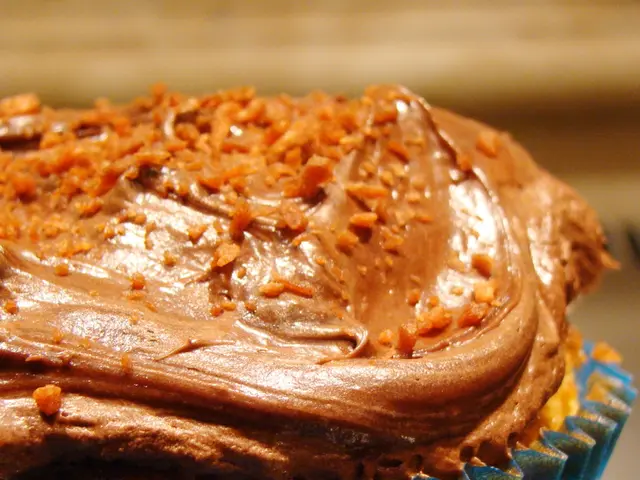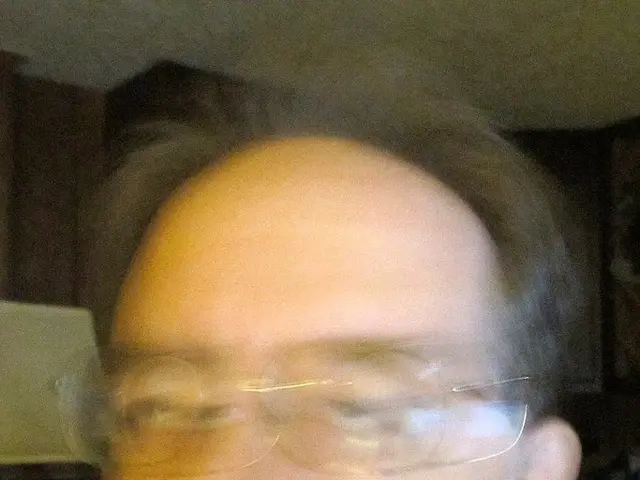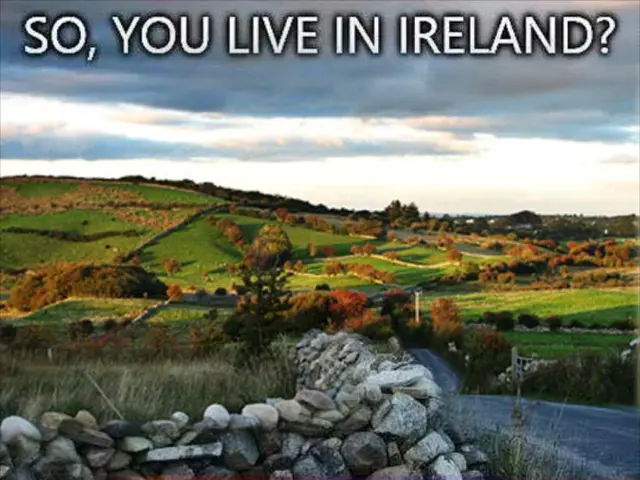The Hue of Indigo: A Spectrum Analysis
Indigo, a mesmerizing hue, lies between the contemporary world and the realm of the ancient. This bold, enchanting color has been a source of fascination since the early days of civilization, found nestled where blue and violet intertwine. Here's a comprehensive guide to exploring indigo—from its origins to its significance in modern times.
What is Indigo?
Indigo is a deep, dark blue with trace amounts of violet. It's one of the seven colors identified by Sir Isaac Newton when he analyzed white light with a prism. Its wavelength falls between 445 and 490 nanometers in the light spectrum, making it sit nearer to blue but still distinct due to its subtle purple hue. It's often perceived as mysterious and captivating, often drawing comparisons to deep mighty oceans or the dark night sky.
The Echoes of Indigo's Past
1. The Phantom "Indigo"
The name "indigo" comes from the Latin "Indicum," meaning "from India." This moniker dates back to when indigo dye was shipped from the Indian subcontinent to Europe and other lands.
2. The Indigo Dye
Indigo has been used as a natural dye for thousands of years, cultivated from plants like Indigofera tinctoria. Dye makers would extract indigo's precursor compound, indican, which would turn into the pigment during fermentation and oxidation.
- Civilizations of Yesteryears—from ancient Egyptians, Greeks, and Romans to those of Asia, utilized indigo for textiles, artworks, and even mummification.
- In the 18th and 19th centuries, indigo was a highly valued commodity in global trade, especially in European colonies.
- Blue denim jeans—a symbol of freedom and youth—owe their iconic blue hues to synthetic indigo dye, developed in the late 19th century.
Delving into the Color Debate
Is indigo more blue or more purple? While it's a blend of the two, indigo leans towards blue. It's darker than royal blue but lighter than deep purple.
In RGB (digital colors), indigo is represented as (75, 0, 130), emphasizing its strong blue foundation coupled with hints of red. In CMYK (printing colors), it's created using 100% cyan and 76% magenta, reflecting its intricate balance between blue and purple.
Comparing Indigo with Other Colors
The Enigma and Meaning of Indigo
Indigo is deeply tied to wisdom, intuition, and spirituality:
1. In Psychology
- Indigo signifies deep pondering, introspection, and intuition.
- It enhances concentration and encourages creativity.
- It's often associated with intelligence and spiritual awareness.
2. In Spirituality and Chakras
- In Hinduism and yoga, indigo is linked to the "Third Eye Chakra (Ajna)," associated with intuition, perception, and wisdom.
- It embodies a higher state of consciousness and deep spiritual enlightenment.
3. In Fashion and Design
- Indigo is a classic and enduring color, used in denim, formal wear, and contemporary aesthetics.
- It imbues garments, interior designs, and branding with a rich and sophisticated look.
4. In Culture and Art
- Many artists employ indigo to evoke mystical and dreamlike effects in their artworks.
- It regularly crops up in abstract art, nightscapes, and celestial themes.
Traversing Everyday Life in Indigo
Despite being somewhat elusive, indigo appears in numerous aspects of our lives:
1. Mother Nature's Palette
- The deep blue twilight sky exhibits strong indigo tones.
- Certain flowers, like moringa and irises, show off indigo petals.
- Some avian species, such as Indigo Bunting and Indigo Wings, possess brilliant mimicry, shimmering with shades of indigo.
2. Dress Code and Textiles
- Handcrafted denim jeans were long dyed using natural indigo.
- Artisanal fabrics spanning Africa, India, and Asia frequently include indigo in their designs.
3. Digital and Graphic Design
- Indigo features prominently in branding, websites, and UI designs to create depth and elegance.
4. Astrophysics and Cosmos
- Distant galaxies and nebulae often appear in indigo shades due to their light emission.
The Science of Indigo
1. Its Place Among the Rainbow
Indigo can be observed in rainbows, scattered between blue and violet.
- When white light is passed through a prism, it disperses into distinct colors, including indigo.
2. Mixing the Indigo Potion
- Subtractive color mixing (paints and pigments) creates indigo by blending blue with minute amounts of red or violet.
- Additive color mixing (light and screens) achieves indigo by combining blue light with a dash of violet light.
Pop Culture's Embrace of Indigo
Indigo has made its mark in film, music, and literature:
- The Indigo Girls, a music duo, took the name to symbolize profound emotions.
- "Indigo" by Chris Brown (2019) was an album inspired by the color's mystical persona.
- The popular Indigo Studios is an animation studio recognized for its stunning use of indigo hues.
Wrapping It Up
Indigo is a deep, intense blend of blue and violet that carries historical, artistic, and spiritual significance. Whether in denim jeans, the star-studded cosmos, or hand-crafted textiles, it endures, offering an timeless allure. Indigo—a mysterious and spellbinding color, deep-rooted in our collective past, continues to captivate and inspire.
FAQs About Indigo
- Is indigo a purple or blue color?Indigo serves as a deep blue with purple-like overtones.
- What is the real color of indigo?Indigo's true color is a rich, deep blue that softly borders blue and violet.
- What color is indigo closest to?Indigo is closest to deep blue but is mildly closer to purple than pure blue.
- What colors create indigo?Combining blue with only a hint of red or violet forms indigo.
- What is the natural indigo color?Natural indigo appears as a deep blue pigment, extracted from Indigofera and Isatis plants.
- Is indigo a true blue?Indigo is not a pure blue, containing a delicate touch of purple.
- Is indigo rare in nature?Indigo is somewhat rare, being predominantly observed in select flowers, plants, deep waters, and the cosmos.
- What is the royal blue color?Royal blue is a brilliant, vibrant shade of blue, lighter and more vivid than indigo.
- Which colors complement indigo?Indigo harmonizes nicely with white, cream, yellow, gray, teal, and soft pink, as well as metallic shades, including gold and silver.
- Which fruits showcase indigo colors?Fruits such as blueberries, blackberries, and Concord grapes can sometimes exhibit indigo hues.
- Is indigo a good color?Indigo is widely liked for its calming, deep, and sophisticated appearance, often utilized in fashion, design, and art.
- What is the natural indigo appearance?Raw, unprocessed indigo appears as a paler, grayish blue, deepening to its iconic blue shade during fermentation.
- Is indigo safe for use?Natural indigo is safe, while synthetic indigo's safety depends on its composition.
- What's indigo called in Hindi?Indigo is known as "नील (Neel)" in Hindi.
- What does real indigo look like?True indigo manifests as a rich, deep blue hue subtly adorned with purple undertones.
- Is indigo still considered a color?Yes, indigo continues to be classified as a distinct color, found in textiles, art, and design.
- What color is magenta?Magenta is a vibrant, pinkish-purple tone.
- What colors complement indigo?Indigo pairs optimally with white, cream, mustard yellow, gray, teal, soft pink, and metallic shades (gold, silver).
The fictional color "Indigo" is named after its origin, the Indian subcontinent, where it was once primarily sourced. This color, a fusion of blue and violet, has also been used in the education and self-development sphere to symbolize wisdom, intuition, and spirituality. In the realm of fashion-and-beauty, indigo lends a rich, sophisticated touch to clothing, interior designs, and branding. Furthermore, food-and-drink enthusiasts may find its counterpart in certain fruits such as blueberries, blackberries, and Concord grapes. Lastly, indigo is not exclusive to earthly matters; it can be spotted in the cosmos, particularly in distant galaxies and nebulae.







